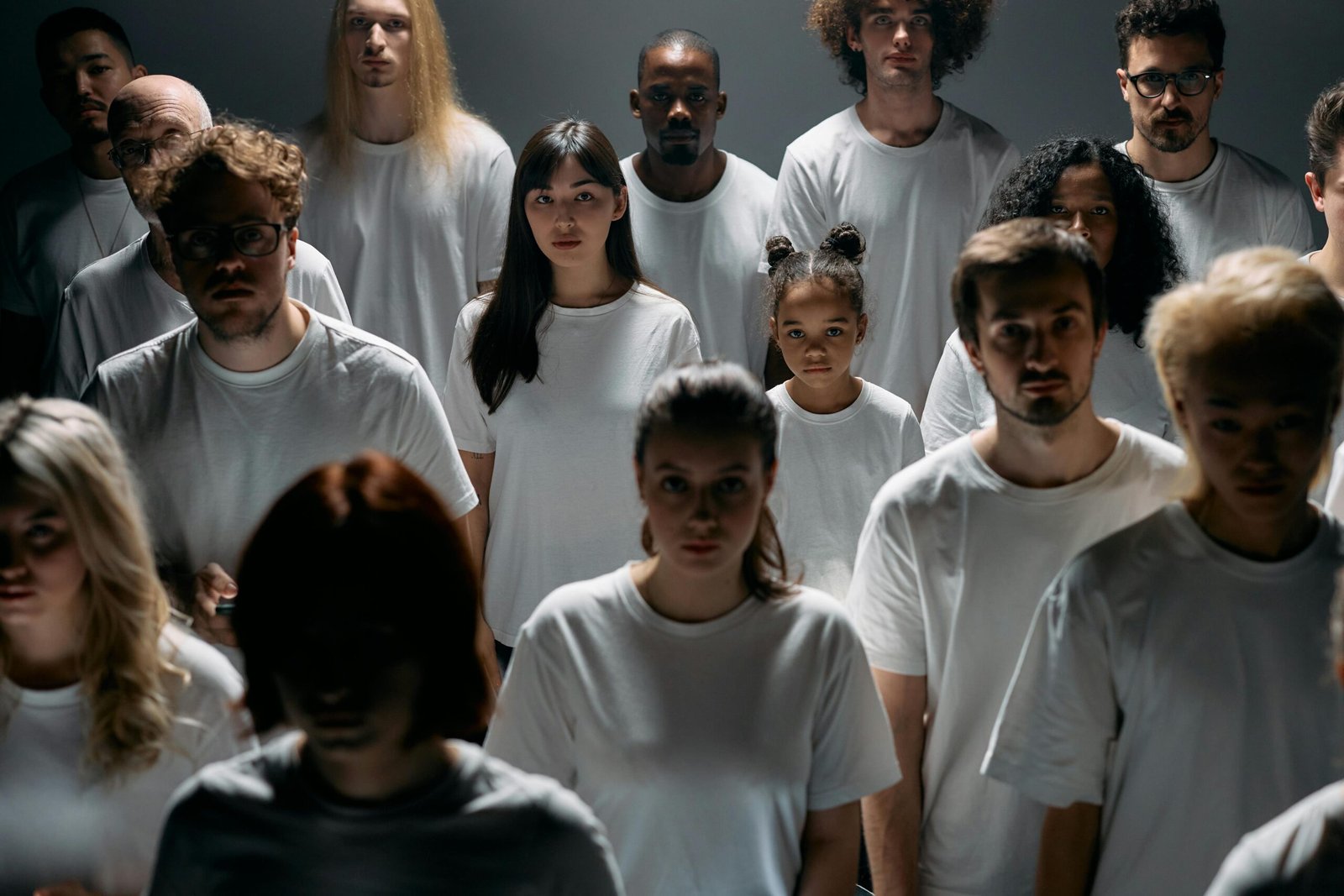
Fluid Selves and Digital Spaces:
Representation, Subjectivity, and Identity Construction in Digital Art
Abstract
This article explores the relationship between digital art, representation theory, and identity construction in contemporary media landscapes. Drawing on cultural theory and media studies, it examines how digital technologies empower both creators and audiences to participate in meaning-making processes. Through the lens of subjectivity and representation, the paper argues that digital art functions as a dynamic site for the negotiation of fluid, plural, and evolving identities across global contexts.
Introduction
In an era defined by interconnectivity and media saturation, digital art has evolved beyond aesthetics or entertainment to become a powerful platform for identity expression and cultural engagement. Unlike traditional art forms, which often rely on linear narrative and fixed representations, digital art offers open-ended, interactive, and personalized experiences. It invites both artists and viewers to engage in the co-construction of meaning, making it a fertile ground for examining identity as a dynamic and socially situated process.
Representation as a Cultural Practice
Theoretical frameworks on representation, particularly Stuart Hall’s (1997) view of it as a “signifying practice,” are central to understanding the power of digital art. Representation is not merely a reflection of reality—it is an active process that shapes reality through symbolic meaning. In this context, the digital medium enables creators to craft narratives that do not simply reproduce social norms but challenge and redefine them.
Digital art’s immersive and interactive qualities invite diverse interpretations and deepen the audience’s role in the construction of meaning. The viewer is no longer a passive recipient but a participant in a mediated cultural exchange. Interpretations of digital artworks are shaped by the viewer’s social background, cultural identity, and lived experience. Social structures—such as race, gender, class, and geography—deeply influence the way individuals perceive, decode, and internalize digital representations (Hall, 1980; Fiske, 1987).
Furthermore, the affordances of digital platforms—the tools, interfaces, and formats used—are not neutral. These technical elements themselves shape the ways meaning is made, guiding how audiences interact with, interpret, and emotionally respond to artistic content (Manovich, 2001; Murray, 1998).
Identity in Flux: The Viewer’s Perspective
1. The Digital Mirror of Plural Selves
For global audiences, digital art functions as a reflective medium through which individuals can see themselves represented in diverse and contextually resonant ways. Whether through representations of underrepresented communities, complex emotions, or shared cultural motifs, digital artworks often provide a mirror that affirms viewers’ sense of belonging, especially for those marginalized in traditional media spaces.
2. Embracing Fluidity and Experimentation
Digital environments allow viewers to engage with representations that accommodate shifting and hybrid identities. Rather than conforming to fixed cultural categories, digital art encourages individuals to explore different facets of selfhood, experiment with alternative personas, and navigate contradictions within their identities. This process aligns with contemporary understandings of identity as performative, relational, and continuously negotiated (McLuhan, 1994; Storey, 2018).
3. Challenging Norms and Rewriting Narratives
By offering alternative modes of representation, digital art challenges hegemonic discourses and expands the space for critical engagement. It enables viewers—particularly from historically marginalized backgrounds—to encounter narratives that resonate with their realities and offer new frameworks for self-definition. The global reach of digital platforms further amplifies this potential, allowing local experiences to intersect with global discourses of identity, resistance, and change.
Creative Autonomy: The Artist’s Perspective
1. Liberation from Traditional Boundaries
Digital tools empower artists with unprecedented creative freedom. Unlike conventional media, digital platforms provide the flexibility to transcend disciplinary and material limitations. Artists can mix media, play with nonlinear timelines, and use code, motion, or interactivity as expressive elements. This technological openness enables a more radical and experimental approach to self-representation (Murray, 1998; Manovich, 2001).
2. Anonymity and Artistic Risk-Taking
The digital landscape also offers degrees of anonymity that allow artists to take greater risks in exploring personal, political, or controversial themes. Artists can navigate topics such as gender identity, cultural hybridity, or social alienation without the constraints of censorship or social judgment, fostering authenticity and deeper creative expression (Jones, 2011).
3. Subversion through Digital Narratives
Artists across the globe are increasingly using digital art to question and deconstruct dominant narratives around race, gender, nationality, and power. By embedding critique and counter-narratives in their work, they participate in global conversations around identity politics, social justice, and cultural transformation (Hall, 1997; Storey, 2018).
Conclusion
Digital art, as both a medium and a cultural practice, offers a transformative space for negotiating the complexities of identity in a globalized and digitized world. For both creators and audiences, it provides opportunities to reflect, experiment, and redefine the self in dynamic and relational ways.
In this context, identity is not a fixed attribute but a process—shaped by participation, mediated by technology, and influenced by socio-cultural conditions. As digital art continues to evolve, it will remain a critical platform for collective and individual expressions of the self, connecting diverse voices across boundaries and shaping new imaginaries of what it means to be human in the digital age.
References
- Fiske, J. (1987). Television Culture. London: Routledge.
- Hall, S. (1980). Encoding/decoding. In Culture, Media, Language: Working Papers in Cultural Studies, 1972–79 (pp. 128–138). London: Routledge.
- Hall, S. (1997). The Work of Representation. In S. Hall (Ed.), Representation: Cultural Representations and Signifying Practices (p. 15). London: Sage Publications.
- Hebdige, D. (1979). Subculture: The Meaning of Style. London: Routledge.
- Jones, A. (2011). ‘The Artist is Present’: Artistic Re-enactments and the Impossibility of Presence. TDR: The Drama Review, 55(1), 16–45.
- Manovich, L. (2001). The Language of New Media. Cambridge, MA: MIT Press.
- McLuhan, M. (1994). Understanding Media: The Extensions of Man. Cambridge, MA: MIT Press.
- Murray, J. H. (1998). Hamlet on the Holodeck: The Future of Narrative in Cyberspace. Cambridge, MA: MIT Press.
- Storey, J. (2018). Cultural Theory and Popular Culture: An Introduction (7th ed.). London: Routledge.
